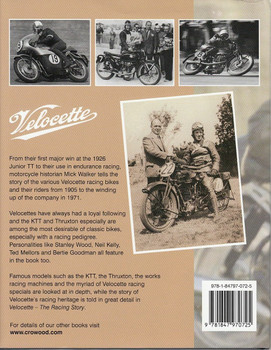Description
By: Mick Walker .
THE BMW racing story is an example to all of how patient development of a basically sound design can achieve success. The famous German marque began racing during the early 1920s with machines fitted with the same configuration of horizontally opposed twin-cylinder engine that it still uses today, over eighty years later.
Although the bikes were initially unsuccessful in international events, the BMW engineers steadily worked to improve their performance. Their first coup came with the record-breaking exploits of Ernst Henne, and then, in the years leading up to the Second World War, they finally succeeded in breaking through into the Grand Prix scene with 500cc supercharged versions. These machines, by virtue of their superior speed and reliability, consistently beat the previously all-conquering British Nortons and Velocettes.
In both 1937 and 1938 Jack West won the Ulster Grand Prix, and 1938 also saw victory for BMW in the European Championships (the forerunner of today's World Series). But it was in 1939 that BMW reached its pre-war racing zenith, when Georg Meier won the Senior TT – the first time this feat had ever been achieved by a foreign rider on a foreign bike.
Then, during the 1950s, the likes of Meier, Walter Zeller, Dickie Dale and Geoff Duke campaigned BMWs in international competition. But it was in sidecar racing that the German company really dominated, winning no fewer than nineteen world titles in twenty-one years from the mid-1950s to the mid-1970s.
But BMW – The Racing Story covers much more: the American scene, where BMW has had a major presence for many years; record-breaking and endurance racing; the K series 4-cylinder; the 4-valve twins, which arrived in the early 1990s; and, finally, the great successes gained by the F650-based single in the European and British Supermono series.















